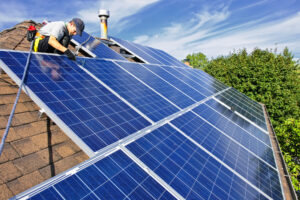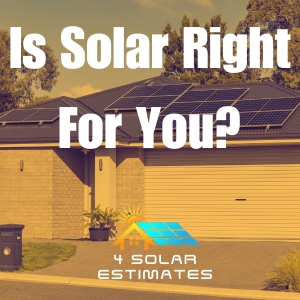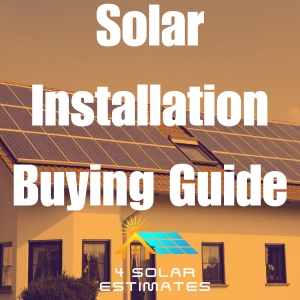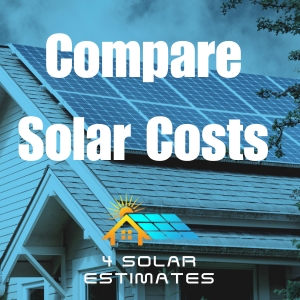
How Solar Energy Stacks Up Against Your Current Energy Bill
As the world increasingly turns towards sustainable energy solutions, solar energy has emerged as a leading alternative to traditional energy sources. Many homeowners are curious about the financial implications of switching to solar power. In this comprehensive guide, we’ll break down the costs associated with traditional energy bills and compare them with the expenses and savings of solar energy for an average-sized home.
Understanding Your Traditional Energy Bill
Before diving into solar energy, let’s first understand the components of a traditional energy bill.
The Average Cost of Traditional Energy
- Monthly Charges: The average monthly electricity bill in the United States varies significantly depending on the region, but it typically ranges between $100 and $200 for an average-sized home.
- Factors Influencing Cost: These costs are influenced by the home’s size, the efficiency of appliances, regional energy rates, and energy consumption patterns.
Breakdown of Charges
- Energy Consumption: The bulk of the bill is determined by the kilowatt-hours (kWh) consumed.
- Base Charges and Fees: Additionally, there are often base service charges, taxes, and possibly fees for infrastructure maintenance.
The Real Costs of Solar Energy
Switching to solar energy involves initial setup costs but leads to significant savings over time.
Initial Investment
- Solar Panel Installation: The upfront cost for installing solar panels can range from $15,000 to $25,000 depending on the size and type of system.
- Incentives and Rebates: Many regions offer incentives, tax breaks, and rebates that can significantly reduce the initial investment.
Long-Term Savings
- Reduced Monthly Bills: Once installed, solar panels can significantly reduce or even eliminate monthly electricity bills.
- Return on Investment: Over time, the savings on electricity bills will cover the initial cost of installation. The average payback period is typically around 7-8 years.

Comparing Savings: Solar vs. Traditional Energy
When comparing solar energy to traditional energy sources, the long-term savings are where solar really shines.
Long-Term Cost Analysis
- Over 20 Years: Over a period of 20 years, the average homeowner can save anywhere from $10,000 to $30,000 by switching to solar, depending on their location and energy usage.
- Energy Price Inflation: Solar energy protects against the rising costs of energy. While traditional energy costs are subject to fluctuations and increases, solar energy provides more predictable and stable expenses.
Environmental Impact
- Reduced Carbon Footprint: Beyond the financial aspects, solar energy significantly reduces your household’s carbon footprint, contributing to a healthier environment.
While the initial investment for solar energy can be substantial, the long-term savings are considerable. Not only does solar power offer a way to lock in energy costs and protect against future price increases, but it also provides a sustainable and eco-friendly energy solution.
Exploring Different Types of Solar Energy and Their Costs
When considering a switch to solar power, it’s important to understand the various types of solar energy systems available and how they impact the overall cost. Each type of solar panel comes with its unique features and is suitable for different home types.
Monocrystalline Solar Panels
- Description: Monocrystalline panels, recognizable by their black color and uniform look, are made from single-crystal silicon. They are known for their high efficiency and durability.
- Cost Factor: While they are generally more expensive than other types, their high efficiency means they are a great choice for homes with limited roof space.
- Best For: Ideal for homeowners who have smaller roofs or who want to maximize their energy production.
Polycrystalline Solar Panels
- Description: Polycrystalline solar panels, with their blue, speckled appearance, are made from multiple silicon crystals. They have slightly lower efficiency rates compared to monocrystalline panels.
- Cost Factor: These panels are more affordable, making them a good option for homeowners on a tighter budget who still want to benefit from solar power.
- Best For: Suitable for homeowners with more roof space who are looking for a balance between performance and cost.
Thin-Film Solar Panels
- Description: Thin-film panels are made by layering one or more thin layers of photovoltaic material onto a substrate. These panels are known for their sleek appearance and flexibility.
- Cost Factor: They are the least expensive but also the least efficient of the three types. They degrade faster than crystalline panels.
- Best For: Best for large, commercial spaces or homes with a lot of space for installation. Not typically recommended for average-sized homes due to their lower efficiency and larger space requirements.
Solar Tiles and Shingles
- Description: Solar tiles and shingles integrate solar cells directly into roof shingles, offering an aesthetically pleasing option for solar power.
- Cost Factor: They are more expensive than traditional solar panels and less efficient, but they offer a seamless look that many homeowners appreciate.
- Best For: Ideal for homeowners who prioritize the aesthetic aspect of their solar system or those in neighborhoods with strict HOA regulations regarding the appearance of solar installations.

Impact on Solar Energy Cost
The type of solar panel you choose will significantly impact the initial installation cost. High-efficiency panels like monocrystalline are more expensive upfront but can provide more savings in the long run due to their higher energy output. On the other hand, polycrystalline and thin-film panels might have a lower upfront cost but may require more space and potentially result in lower energy savings over time.
Considerations for Your Home
Choosing the right type of solar panel depends on several factors:
- Roof Size and Shape: Larger roofs can accommodate more panels, which can offset lower efficiency.
- Budget: Your budget will play a crucial role in determining which type of panel you can afford.
- Energy Needs: Consider your home’s energy consumption to determine how much energy you need to generate.
- Aesthetic Preferences: If the appearance of your solar panels is important, you may want to consider integrated options like solar shingles.
Understanding the different types of solar panels and their costs is crucial in making an informed decision about solar energy. By considering factors such as your home’s energy needs, roof size, and aesthetic preferences, you can choose a solar solution that not only fits your budget but also meets your energy goals and complements the look of your home.
Breaking Down the Actual Costs of Solar Energy
When considering the switch to solar energy, it’s crucial to have a clear understanding of the financial commitment involved. Based on the estimate that the average home will pay between $12,100 and $16,500 for solar panel installation before tax credits, let’s break down the costs of solar to provide a clearer picture.
Average Costs of Solar Panel Installation
- Initial Installation Cost: The cost of installing solar panels on an average-sized home typically ranges between $12,100 and $16,500. This price range is influenced by factors such as the size of the system (measured in kilowatts), the type of solar panels chosen, and the complexity of the installation.
- Cost Per Watt: On average, solar panel installation costs around $2.50 to $3.50 per watt. For a standard 6 kW system, this translates to a total cost of approximately $15,000 to $21,000 before any incentives.
Additional Factors Affecting Cost
- Roof Characteristics: The layout and condition of your roof can impact the cost. Complex roof designs or roofs that need repairs or reinforcements can increase installation costs.
- Geographical Location: Labor costs and the amount of sunlight your location receives can also influence the overall cost. Some areas may also have higher costs due to local regulations or permitting fees.
- Equipment Choices: The choice between monocrystalline, polycrystalline, thin-film panels, or solar tiles can significantly vary the total cost. Higher-efficiency panels like monocrystalline are more expensive but may require fewer panels to meet your energy needs.

Understanding Tax Credits and Incentives
- Federal Solar Tax Credit: As of the current year, homeowners can take advantage of the Federal Solar Investment Tax Credit (ITC), which offers a credit of 26% of the cost of the solar panel system.
- State and Local Incentives: Many states and local governments offer additional incentives, rebates, or tax breaks for solar energy, which can further reduce the overall cost.
Long-Term Savings
- Energy Bill Reduction: Post-installation, the average homeowner can expect a significant reduction in monthly energy bills, often 70-100% savings, depending on energy usage and solar production.
- Return on Investment: While the upfront cost may seem substantial, the long-term savings on energy bills and the increased value of your home can make solar panels a financially sound investment.
Example Cost Breakdown
For an average 6 kW system costing $15,000:
- Federal Tax Credit: 26% of $15,000 = $3,900.
- Net Cost After Tax Credit: $15,000 – $3,900 = $11,100.
This net cost can be further reduced with state and local incentives, making solar energy an even more attractive investment.
While the initial investment in solar energy can be significant, understanding the breakdown of these costs, along with the available incentives and long-term savings, is key to evaluating its financial viability. Solar energy not only offers environmental benefits but also presents an opportunity for considerable savings and a valuable investment in your home’s future.
When stacked up against traditional energy bills, solar energy offers an attractive alternative both financially and environmentally. With the potential for significant savings and a reduced carbon footprint, solar energy is an investment worth considering for homeowners.

Leave a Reply